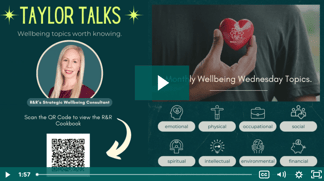As the cold weather sets in, it's crucial to be aware of the dangers that come with it, especially the risk of slip and fall injuries. At R&R Insurance, we understand the importance of safety, which is why our loss control consultant, Nick Steiner, is here to share some valuable tips to help you navigate the icy conditions safely.
The Cost of ComplacencyIn 2021, the average claim for slip and fall injuries was nearly $50,000. This staggering amount highlights the need for vigilance and precaution during the winter months. By following these simple yet effective tips, you can prevent accidents and ensure the safety of yourself and others.
Footwear MattersOne of the first steps to prevent slips and falls is to choose the right footwear. Opt for shoes with wide, non-slip soles and deep treads. Avoid wearing heels, dress shoes, or any footwear that lacks proper traction. The right shoes can provide the stability you need on slippery surfaces.
Stay Alert to Changing ConditionsWinter weather can be unpredictable, with cycles of freezing, melting, and refreezing. Keep an eye on the weather forecast and be prepared for changing conditions. This awareness can help you anticipate and navigate slippery areas more safely.
Step SafelyWhen getting out of your vehicle or stepping off curbs, remember to step down, not out. Use your vehicle for added stability and step down with both feet to maintain balance. This simple change in habit can significantly reduce the risk of falls.
Follow Marked PathwaysResist the temptation to take shortcuts. Marked pathways are often cleared and salted, providing the safest route of travel. By sticking to these paths, you can avoid unexpected icy patches.
Take Your TimeSpeed is not your friend on ice and snow. Slow down and take small, careful steps to maintain your footing. Rushing can lead to slips and falls, so give yourself extra time to reach your destination.
Keep Your Hands FreeTry to carry only what is necessary and keep your hands free for balance. Use a backpack or bags to carry your belongings, and avoid overloading yourself.
The Penguin ShuffleEmbrace the penguin shuffle! Walk flat-footed and take short steps to keep your center of balance over your feet. This technique can help you maintain stability on icy surfaces.
Avoid DistractionsPut away your cell phone and focus on your surroundings while walking. Distractions can lead to accidents, so it's important to stay alert and aware of potential hazards.
Report and ActIf you spot icy conditions, report them to your employer or property owner so they can take action. Additionally, if salt is available, take the initiative to spread it on slippery areas to prevent accidents.
Stay Safe with R&R InsuranceAt R&R Insurance, your safety is our priority. We hope these tips help you navigate the winter weather safely. For more information on this topic or any other services we provide, please don't hesitate to reach out to us. Stay safe and take care!


